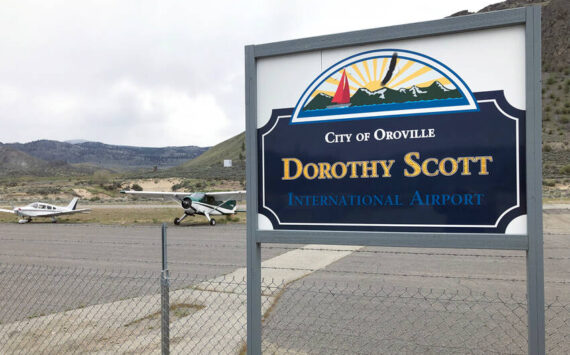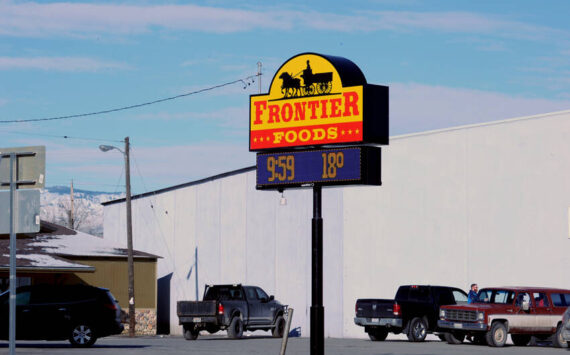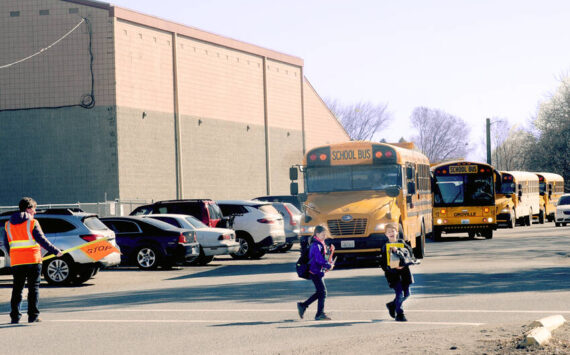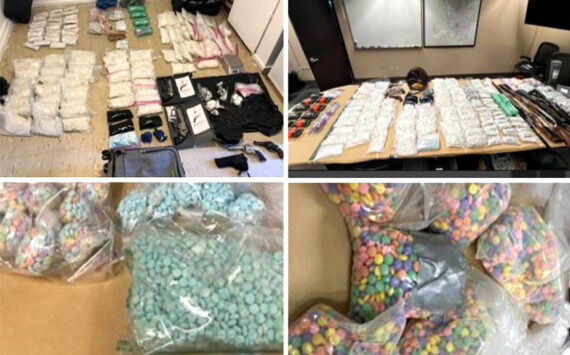OMAK – Merely announcing a lift of the ban on imports of Canadian cattle led to a 50 percent drop in market prices local ranchers told U.S. Senator Maria Cantwell last Thursday.
Members of the Okanogan Cattlemen’s Association met with Sen. Cantwell in Omak at the Koala Grill to discuss what affect allowing Canadian beef back across the border into the United States would have on their industry. Importation of the cattle was banned after cows with bovine spongiform encephalopathy (BSE) were found to have entered the United States from Canada in 2003. On Aug. 29, 2007 the Ninth U.S. Circuit Court of Appeals rejected an appeal of the U.S. Department of Agriculture’s (USDA’s) minimal risk region rule on imports of cattle from countries affected by BSE, sometimes called Mad Cow Disease. The USDA minimal risk region rule will allow cows born after 1997 back into the country as soon as March 7, 2008.
“I’m a businesswoman and I understand what it takes to make the dollars and cents go around,” said Cantwell, who asked the ranchers what affect lifting the ban would have on their industry.
“Before the announcement cattle were selling for about 65 cents a pound and after the announcement that they were going to lift the ban they were at 30 cents. That’s just with the announcement…we haven’t seen a cow come down. It’s just the psychology of the thing,” said Craig Verasjka, vice-president of the local cattlemen’s association.
“That’s over a fifty percent drop,” he said.
It is suspected Canadian cattle that have contracted BSE did so by eating feed that included contaminated meat and bone meal — since banned by the Canadians. One of those Canadian-born cows was found in southeastern Washington in 2003. It had entered the country through the U.S. Port of Entry at Oroville. The discovery of BSE in the United States led to several countries banning the import of U.S. beef. The U.S in turn banned the importation of Canadian cattle.
The USDA ruling will allow Canadian cattle into this country that were born after Canada’s 1997 feed ban outlawing feed containing meat and bone meal, but local ranchers and cattle industry groups argue that nearly as many cows with BSE have been found in Canada since the feed ban as before it was imposed. A number of these infected cows were born after the USDA assumed Canada’s feed ban would eliminate further BSE exposure, according to the United Stockgrowers of America.
“We don’t know where the bottom is. If Canadian beef are let back into the country this county alone could take a $7 million hit in just 10 days,” said Vejraska. “A $700 cow is now worth $350 and by the time you truck it to the sale it might not be worth anything.”
The ranchers said they thought the USDA was supposed to represent everyone in the United States, but felt instead the agency was representing the cattle producers “north of the border.”
Rancher Jerry Asmussen said, “Our meat packers are stockpiling their cows on the Canadian side and they’ll come down like a wave and bring the prices way down.”
Vejraska added, “The USDA is not there to protect us… somehow they think they’re the Department of Commerce.”
“That’s why I am here, to find information so we can prevail over the USDA. I need stories and information and I think the price is important, but the issue that will come up with the border is BSE,” said Sen. Cantwell, who explained the health and safety aspects of the issue were more likely to work in favor of the U.S. cattle producers.
“It is not fair when you have to do all the things you do to make a safe product and then they open up the border to Canada. Canada needs to do more about BSE. The USDA’s Achilles’ heel is they have not resolved this issue,” Cantwell said.
Dal Dagnon, a Tonasket area rancher, said he’s been working with the cattleman’s association and safety issues for 30 years. He told Cantwell that a German immigrant working in Canada had traces of hoof and mouth disease on his clothing and that he had worked in B.C. and elsewhere in Canada.
“Within 14 days the disease had spread across the country. It is so risky to open the border because of the health issue. Most diseases spread by fly or mosquito, just bringing the cattle to the border is putting people and animals at risk,” said Dagnon, who said the inspectors who work at the border were there to identify risk.
“By that time it is too late, it can spread so far and so fast,” he said. “The vet at the border is not even allowed to look in the trucks… just at the paperwork.”
Dagnon added that Brazil has hoof and mouth in the ground. “If they send cattle to Canada within one week those cows are considered Canadian and they can come across the border,” he said. “It is a safety issue as well as an economic one. Since the NAFTA agreement the only thing we can address is the health and safety of humans and animals.”
Cantwell asked why the USDA wasn’t helping.
“The present administration is more interested in getting their oil down here. Unless we get some help it could put a lot of people out of business,” said Vejraska. “I’ve asked the USDA for information on the number of times the rules at the border have been violated and thought we’d get two or three pages. We got 700 pages of violations just in Washington.”
Rod Haeberle, another area rancher, said, “A year ago I read a lot about BSE in Canada and they had eight cases and they had only tested 150,000 cows out of 16 million. In 2003 one case of BSE nearly broke our industry. Overnight it destroyed our fall run of cattle. We lost the export market.”
Haeberle went on to say that the Canadians needed to test more of their cattle. “They had eight in 16,000 with four under the feed ban. The world says only one in one million is acceptable. I think Canada needs to test more cows and prove they only have one case in a million,” he said.
“How can we approach this because the USDA is not in the business of economics?” asked the senator.
“The real answer is to make their feed ban meet ours,” said Vejraska.
“And we need to make ours meet the international standards,” said Cantwell. “As one gentleman said, ‘we’re just one cow away from another disaster.'”
“One reason the USDA has dragged their feet is because they think it is too hard to solve, but you can see what happened in the United Kingdom,” Cantwell said.
BSE was discovered in the United Kingdom in November of 1986. By its peak in 1992 there were 38,680 confirmed cases. The British destroyed whole herds of meat and dairy cattle in their efforts to eradicate the disease.
Vejraska said lifting the ban would be less painful to the county if the USDA waited until the current glut of animals on the market went down.
“I am going to see if we can’t get the USDA rule delayed or change the way it impacts our cattle producers,” said Cantwell, who asked the ranchers for copies of their documentation.
Vejraska applauded Cantwell and her staff for taking the lead on issues affecting the cattle producers, as well as the fruits and vegetables industries. The ranchers also told her that they felt the cattle industry could live with the present language coming out of the House of Representatives regarding country of origin labeling (COOL). Cantwell said the Senate would most likely adopt the legislation with the compromise language in House Bill as well.
“I think our ticket to the future will be to show that we have a higher grade and better product and the label has to match,” Cantwell said.






